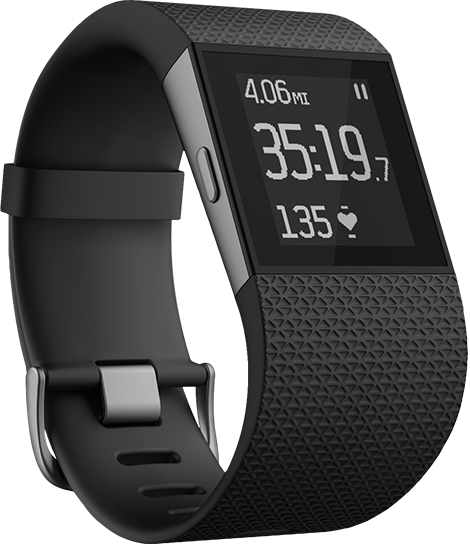The Fitbit Surge
To most people, the entire self-quantified revolution (in which you
track and break down everything you and your body does, into a number)
started with a Fitbit. While I would dismiss that as just fan clubbing,
there is no stepping away from the fact that Fitbit really did bring
idiot-proof fitness wearables to the mass market.
They took the large, frustratingly inaccurate and very unwieldy pedometer devices, shrunk them down, got them connected to an app and made them really easy to use.
That’s one of the reasons why they are known as the Apple of the wearable market: they have the largest share in the category and were valued at about US $8 billion after their recent IPO. Thus, when Fitbit chooses to come into India officially, it’s huge news.

Mi band’s (above) lack of a screen is a downer.
But it also raises many questions: is there such a large market in India that Fitbit chose us over many other countries? Are they coming in too late as some of the others have established a stranglehold already? And what exactly is the competition for Fitbit in India in terms of products as well as price points?
Let’s strap things on tight, sprint through the wearable market in India and see what numbers the screen throws up. Fitbit has come in swinging hard with its full range and fairly aggressive pricing. Let me break down the range with a quick hands-on review of each.
The Fitbit Surge

Surge is the flagship device at Rs 19,990. It’s called a Super Watch, does everything a normal Fitbit does (steps, distance, calories, floors) plus adds on a GPS to track your run and map it. It can also track your heart rate 24x7 (a very big deal). Battery lasts about seven days.
It’s a little thick, the screen is almost 1990s-digital-watch level, and notifications are restricted to calls and SMSs received on your smartphone. Heart rate, floors climbed and sleep-tracking are uncannily accurate. Overall, it’s excellent if you are a frequent runner but otherwise it’s overkill.
They took the large, frustratingly inaccurate and very unwieldy pedometer devices, shrunk them down, got them connected to an app and made them really easy to use.
That’s one of the reasons why they are known as the Apple of the wearable market: they have the largest share in the category and were valued at about US $8 billion after their recent IPO. Thus, when Fitbit chooses to come into India officially, it’s huge news.
Mi band’s (above) lack of a screen is a downer.
But it also raises many questions: is there such a large market in India that Fitbit chose us over many other countries? Are they coming in too late as some of the others have established a stranglehold already? And what exactly is the competition for Fitbit in India in terms of products as well as price points?
Let’s strap things on tight, sprint through the wearable market in India and see what numbers the screen throws up. Fitbit has come in swinging hard with its full range and fairly aggressive pricing. Let me break down the range with a quick hands-on review of each.
The Fitbit Surge

Surge is the flagship device at Rs 19,990. It’s called a Super Watch, does everything a normal Fitbit does (steps, distance, calories, floors) plus adds on a GPS to track your run and map it. It can also track your heart rate 24x7 (a very big deal). Battery lasts about seven days.
It’s a little thick, the screen is almost 1990s-digital-watch level, and notifications are restricted to calls and SMSs received on your smartphone. Heart rate, floors climbed and sleep-tracking are uncannily accurate. Overall, it’s excellent if you are a frequent runner but otherwise it’s overkill.




No comments:
Post a Comment